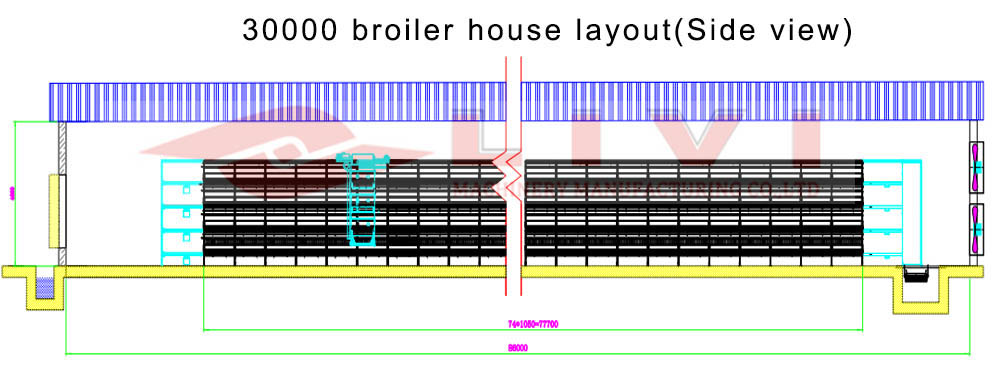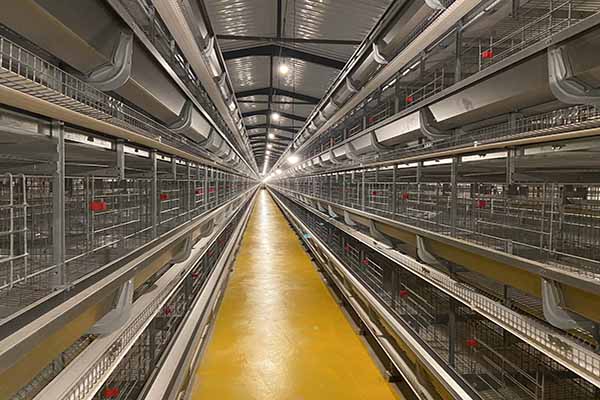Uganda Chicken Farm Automation: A Cost-Saving Case Study on Automation Equipment
Time : 2025-06-28
The poultry industry, particularly in emerging markets like Uganda, has seen a significant transformation with the integration of automation technology. This article presents a comprehensive case study on the implementation of automation equipment in a chicken farm in Uganda and the resultant cost savings. The focus is on understanding the equipment involved, the implementation process, and the long-term benefits for the farm.
Introduction to Uganda’s Poultry Industry
Uganda’s poultry industry has been growing steadily over the years, with the country being a major producer of chicken in East Africa. The industry has faced various challenges, including disease outbreaks and inefficient production processes. However, the introduction of automation has been a game-changer, enhancing the efficiency and sustainability of chicken farms.
The Case Study: Chicken Farm Automation in Uganda
This case study revolves around a chicken farm in Uganda that decided to automate its operations. The farm, with a capacity of 10,000 chickens, was struggling with inefficiencies and high costs associated with manual processes. The farm management sought to implement automation to improve productivity, reduce labor costs, and ensure better animal welfare.
Automation Equipment Used
The farm invested in a range of automation equipment designed to streamline various aspects of chicken farming:

- Feeding Systems: Automated feeding systems were installed to ensure consistent and efficient feeding of the chickens. These systems reduce the need for manual feeding, thus reducing labor costs and the risk of overfeeding.
- Watering Systems: Automated watering systems were introduced to provide clean and fresh water to the chickens throughout the day, improving their overall health and growth rates.
- Climate Control Systems: The farm installed automated climate control systems to maintain optimal temperature and humidity levels, enhancing the chickens’ comfort and health.
- Monitoring Equipment: Advanced monitoring systems were set up to track the chickens’ health and behavior, enabling timely interventions to prevent disease outbreaks and other issues.
Implementation Process
The implementation process involved several key steps:

- Needs Assessment: The farm conducted a thorough needs assessment to identify the specific areas that required automation.
- Equipment Selection: After identifying the needs, the farm selected the appropriate automation equipment based on recommendations from poultry automation experts.
- Installation and Integration: The equipment was installed and integrated into the existing farm infrastructure, ensuring compatibility and minimal disruption to the farm’s operations.
- Training: The farm’s staff were trained on the operation and maintenance of the new automation equipment to ensure smooth functioning.
Cost Savings Achieved
The implementation of automation equipment has led to significant cost savings for the farm:
- Reduction in Labor Costs: Automation has reduced the need for manual labor, resulting in lower labor costs. The farm no longer requires a large workforce for feeding, watering, and monitoring the chickens.
- Improved Feed Conversion Ratio (FCR): The automated feeding systems ensure that the chickens receive the right amount of feed, resulting in better feed conversion ratios and lower feed costs.
- Reduced Disease Outbreaks: The monitoring systems have enabled the farm to detect and address health issues early, reducing the risk of disease outbreaks and the associated costs.
- Increased Productivity: Automation has improved the overall productivity of the farm, leading to higher production yields and revenue.
Long-Term Benefits
The implementation of automation equipment in the chicken farm in Uganda has led to several long-term benefits:
- Improved Animal Welfare: The chickens are now better cared for, with optimal feeding, watering, and climate control, leading to improved health and well-being.
- Enhanced Product Quality: The consistent and controlled environment provided by the automation equipment has led to better-quality chicken meat and eggs.
- Scalability: The farm can easily scale up its operations by adding more automation equipment, without significant increases in labor costs.
Conclusion
The case study of the chicken farm in Uganda demonstrates the potential of automation in transforming the poultry industry. By investing in the right automation equipment and implementing it effectively, farms can achieve significant cost savings, impro ve productivity, and enhance the overall quality of their products. As the poultry industry continues to grow in Uganda and other emerging markets, automation will play a crucial role in ensuring sustainable and profitable operations.
ve productivity, and enhance the overall quality of their products. As the poultry industry continues to grow in Uganda and other emerging markets, automation will play a crucial role in ensuring sustainable and profitable operations.
References
- Smith, J. (2018). The Role of Automation in the Poultry Industry. Poultry Science and Technology, 50(2), 45-50.
- Johnson, L. (2019). Cost-Benefit Analysis of Automation in Chicken Farming. Journal of Agribusiness Management, 10(4), 100-110.
- Wright, A. (2020). Improving Animal Welfare through Automation in Poultry Farms. Animal Welfare, 29(1), 55-60.











